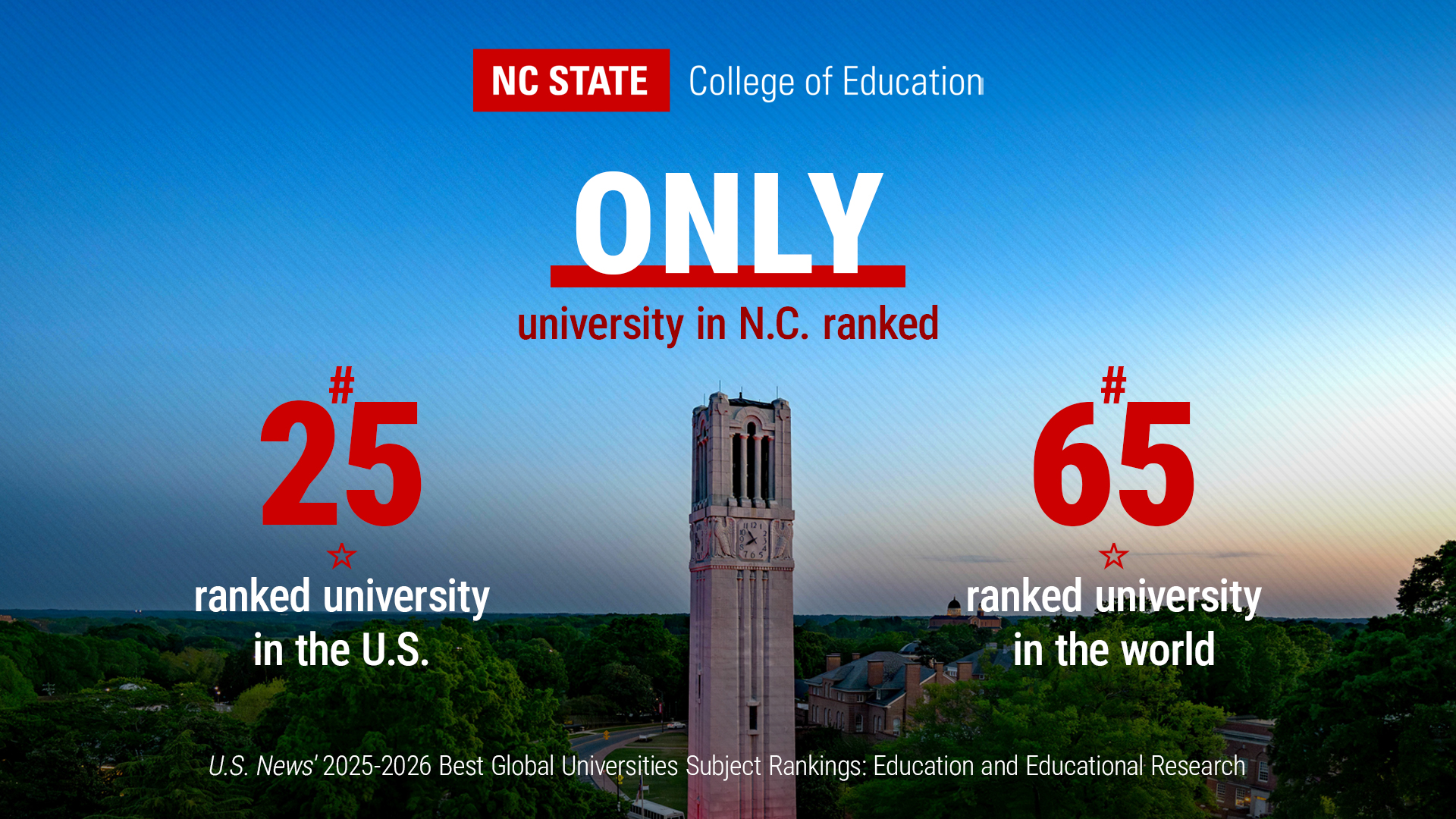‘Teach and Model an Open-mindedness to Competing Points of View:’ Associate Professor Paula McAvoy Shares Advice for Discussing Political Issues in the Classroom

Educators often wonder how they can discuss controversial political issues in the classroom or if these issues should even be brought up at all. NC State College of Education Associate Professor Paula McAvoy helped teachers address this question through a recent workshop entitled “Political Neutrality in the Classroom: What is it and Should I Value it?”
McAvoy, whose research focuses on the relationship between schools and democratic societies, recently hosted the event in collaboration with Alex Worsnip and Michael Vazquez from the philosophy department at the University of North Carolina at Chapel Hill to help about 50 local teachers understand what it means to approach political neutrality in the classroom. During the event, teachers explored vignettes related to common controversial topics that may come up in a social studies lesson and engaged in a question and answer session with researchers.
Below, McAvoy shares with K-12 educators advice to consider when they plan to introduce sensitive political topics in their classroom, as well as resources to help them engage in this work.
What is the difference between being politically fair vs. politically neutral?
Neutrality in the classroom, McAvoy said, can take different forms for different educators. For some, it may mean that they should never take a side or share their views. For others, it may mean that they must present multiple and competing perspectives and can share their own personal views as one among many. Educators may also believe that being neutral means they should just avoid talking about controversial issues in the classroom at all.
McAvoy says that instead of focusing on neutrality, teachers should aim for a classroom culture that is fair towards different points of view. To create a fair discussion in the classroom, McAvoy recommends picking an issue that has good facts and reasons on multiple sides of the argument and having students examine competing perspectives.
“As a teacher, I want to model an open-mindedness to competing points of view and teach students how to reason and think through whether or not they agree with those views,” she said. “And fairness means I want to be attentive to kids whose views obviously disagree with me and care about their learning, and I want to be thoughtful about the learning of kids who agree with me and make sure they’re also learning, growing and being challenged.”
How can I decide which questions are open for discussion in the classroom?
When teaching about controversial issues, McAvoy said educators will need to make pedagogical decisions about which topics they think are open to reasonable disagreement. One way to think through this decision is to consider the difference between an open and settled question.
Open questions, McAvoy said, are those that should be subject to reasonable dispute, because there are multiple views worth taking seriously. These are often policy questions that focus on what should be done to remedy a specific issue in society. While educators or students may have strong convictions about what they believe is the right answer to one of these questions, these personal convictions should be considered among other viewpoints.
Settled questions are those that are not subject to dispute because they have a concrete answer that can be supported by evidence or are not currently alive in the culture.
“Within most policy questions, there are empirical questions embedded. So a teacher might say, ‘We’re going to treat the empirical question as settled and the policy question as open,’” McAvoy said.
How do I prepare my students for a political discussion in the classroom?
Before holding a discussion on a political topic, educators should provide the necessary background information and scaffolding for students. For example, if an educator plans to hold a discussion on Wednesday, classroom time on Monday and Tuesday can be spent learning about the history of an issue and examining and conducting inquiry-based research on primary and secondary sources related to the issue.
When the discussion ultimately takes place, McAvoy recommends discussion strategies like structured academic controversy, Socratic seminars and philosophical chairs instead of a discussion fully mediated by the teacher. This puts the responsibility on the students.
“What the teacher is doing is setting the students up for a more student-centered discussion. Teachers have to frame the issue, prepare the students and set the norms and rules, but the bulk of the discussion is students talking to students,” she said. “Teachers will be on better footing the more they are helping students take responsibility for the discussion. You’re teaching people how to give reasons to one another and respond to reasons from one another.”
What Are Some Resources I Can Use to Further Explore this Topic?
McAvoy recommends the following articles, books and websites for teachers who want to learn more about discussing politics in the classroom:
- The Political Classroom: Evidence and Ethics in Democratic Education
- Teaching Controversial Issues
- Professional Judgment and Deciding What to Teach as Controversial
- Making Classroom Discussions Work: Methods for Quality Dialogue in the Social Studies
- Street Law: Deliberation Resource Bundle and Video
- Close Up Washington D.C.: A Comprehensive Approach to Teaching Current Issues
- Should Teachers Share Their Political Views in the Classroom?
- Categories:


